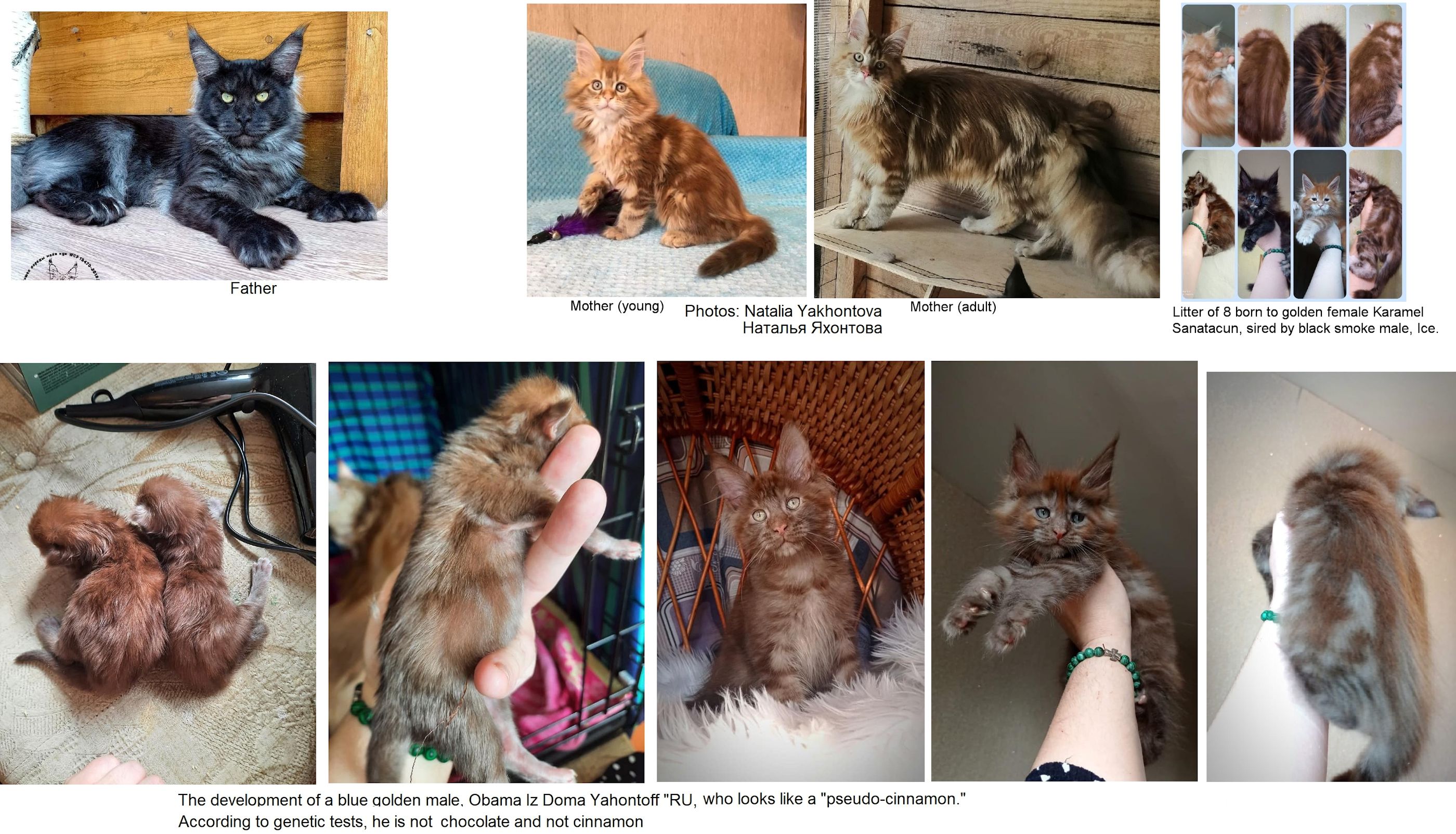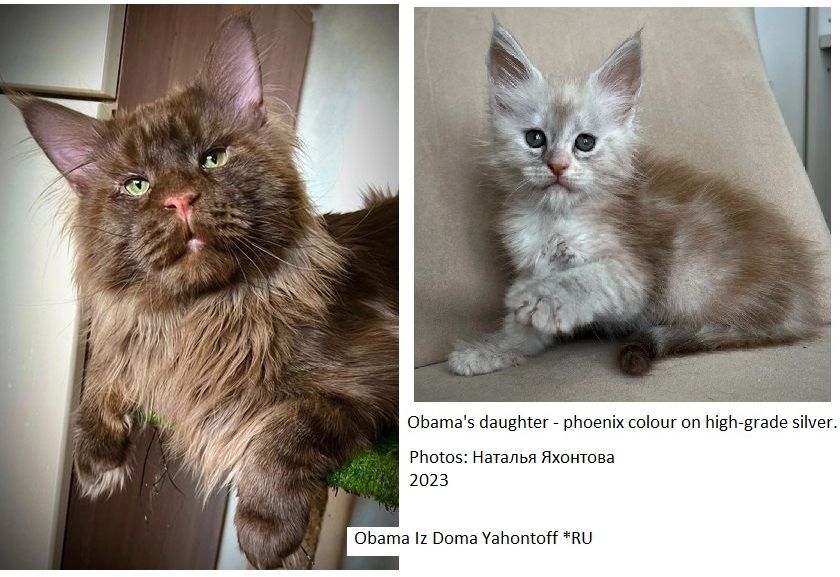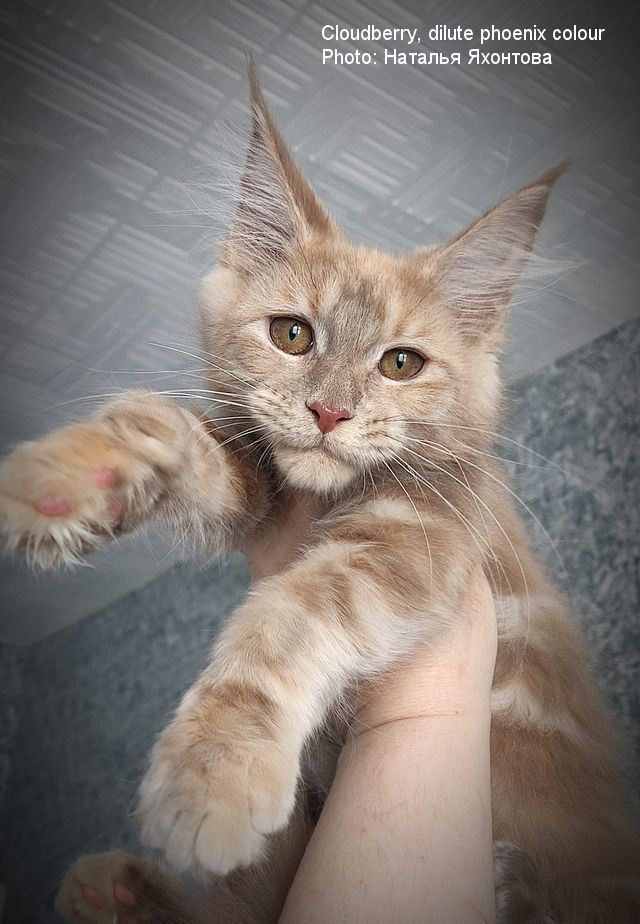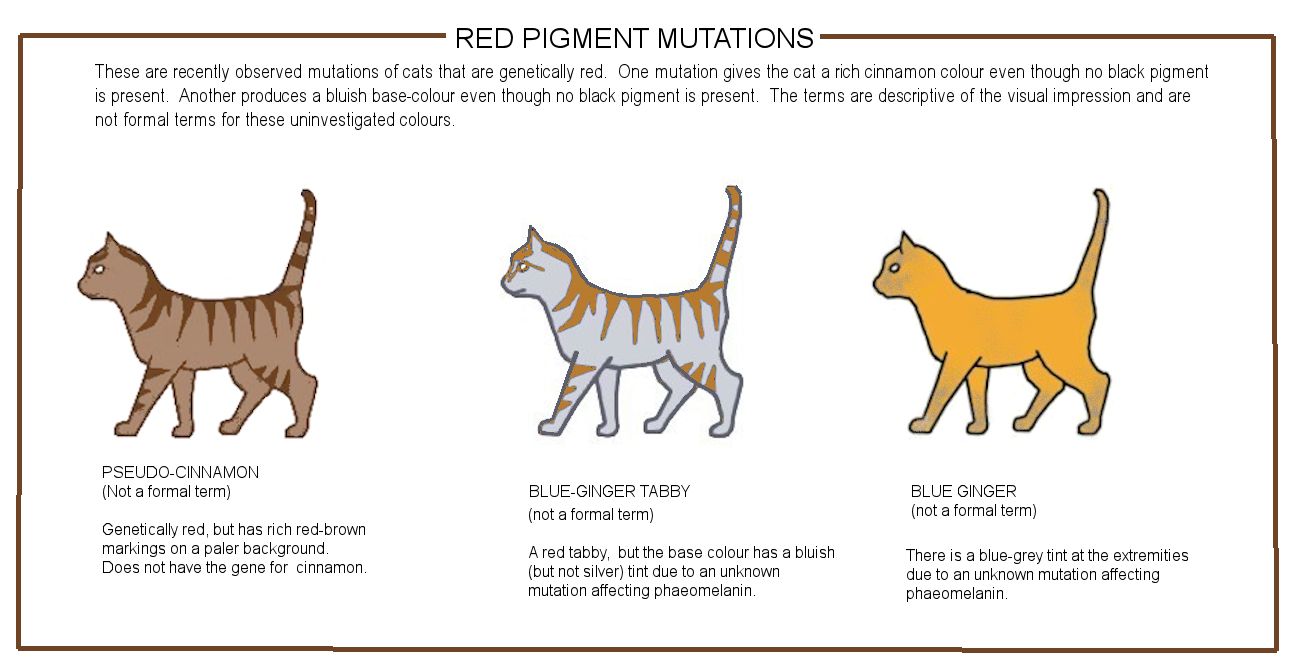
PHOENIX MUTATION (MAINE COON)
"Phoenix" is a dominant mutation that turns a genetically red cat into a deep mahogany colour. This unidentified mutation is the opposite of Extension gene mutations which turn genetically black/blue cats to reddish colours. Phoenix-like mutations have been seen in random-bred cats which I referred to as pseudo-cinnamons and which breeders sometimes referred to as dirty reds. When this effect appeared in a breeding programme, it became possible to research the colour and how it combines with various patterns. The mutation was named and described by Natalia Yakhontova who discovered it in her Maine Coon breeding programme.
PHOENIX COLOUR
Photos and description of "phoenix" colour copyright Natalia Yakhontova ( Doma Yahontoff Maine Coons) and may not be copied by third parties without her permission.
Natalia Yakhontova ( Doma Yahontoff Maine Coons) had a pseudo-cinnamon born in her golden Maine Coon breeding programme. This colour mutation has been named phoenix by the breeder, is a dominant gene, and is found only in Maine Coons. Obama Iz Doma Yahontoff *RU was born to female golden Maine Coon Caramel (Karamel Sanatacun) who does not carry amber, chocolate or cinnamon (DNA tested by Zoogen) and male black smoke Maine Coon called Ice. Two kittens out of 8 were born just gold (blue gold classic tabby and black gold classic tabby) and two amber (inverted commas because Amber is found in Norwegian Forest Cats only). She was waiting to see how the others developed.
Obama Iz Doma Yahontoff *RU was described as blue amber gold. DNA tests by Zoogen showed he did not carry Carnelian/Serdolic (seen in Kurilian) or Amber (seen in Norwegian Forest Cat only). He is not chocolate and not cinnamon, but is genetically red. According to Irina Shustrova, Olga Sinitsa and Svetlana Ponomareva this Gold colour could be a new mutation of locus E. Obama’s nose leather does not have a dark outline which means he is non-agouti (to be confirmed by DNA test) and he should be solid coloured, but he has a very clear, bright classic tabby pattern of mahogany brown on a greyish background. The visible pattern on a non-agouti cat is another indicator that he is genetically red.
By March 2023 there were 4 phoenix colour cats in existence (3 generations). By December 2023, there were 15 phoenix cats and kittens. In 2024, further confirmation came from Petgeno Lab in China that "phoenix" cats are genetically red.
The phoenix gene works on the saturation of red pigmentation and it affects all of the pigment: brighter eyes, change of pigment of pads, nose leather, fur, but there always seems to be a bluish hue to the undercoat. Because it affects red pigment it can combine with any pattern including tabby, tortie, pointed, silver etc. At birth, phoenixes are visually golden with blue tails and paws. The saturation intensifies with age.
A standard is being written, but until the colour is formally recognised, the cats are registered as red (their genetic colour).




THE OPPOSITE OF AMBER
A number of extension (E) gene mutations are known in the cat: amber, russet and carnelian/serdolic. These genes all act on black pigment (eumelanin) and cause it to change to a reddish colour. Amber and russet are delayed colour change genes causing the coat to gradually change colour as the cat reaches maturity. This gives a genetically black cat that appears reddish.
The pseudo-cinnamon or mahogany colour is present from birth and works in the opposite direction it turns red pigment (phaeomelanin) to a dark brown that resembles cinnamon or chocolate even though the cat is genetically red. In self-coloured cats, they tabby pattern may be clearly visible as mahogany markings on a bluish background colour (which is not silver) in the same way that tabby markings are visible even in self red cats (because the non-agouti gene does not affect phaeomelanin in the same way it affects eumelanin).
Chart: Recently Noted Mutations of Red Pigment
These colours are under investigation and may not be true mutations, just slight modifications of how known genes are being expressed visually. For now I'll use the term "mutation" in a very loose sense. All of these occur on cats that are genetically red. The colours visuallyb resemble eumelanin (black pigment) colours even though no black pigment is present. One mutation/modification turns red pigment into a rich cinnamon colour. Another turns the ground colour of red tabbies to a bluish/lilac colour. This may also be responsible for the bluish tones at the extremities of some red cats.
